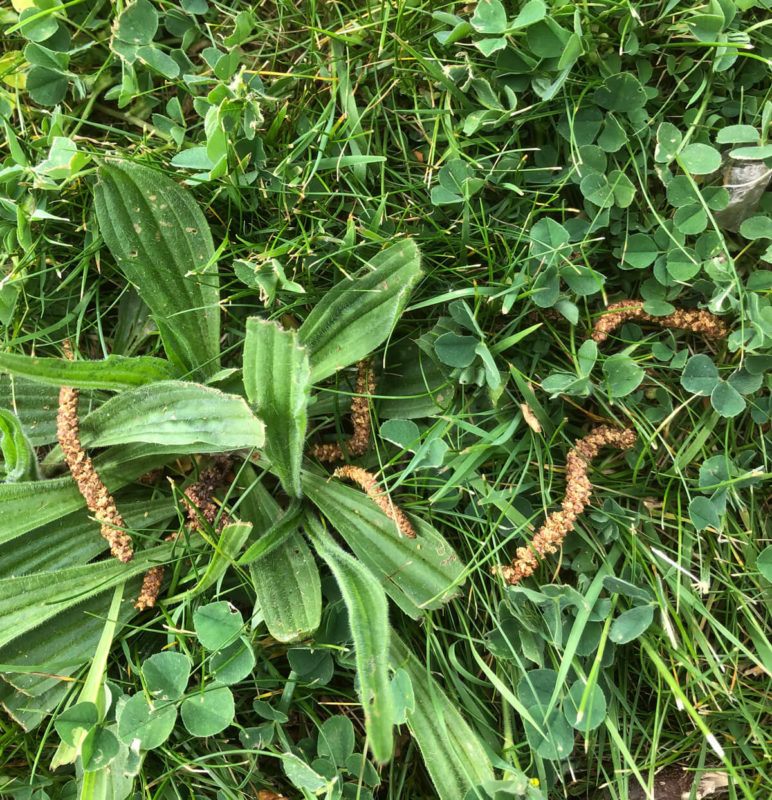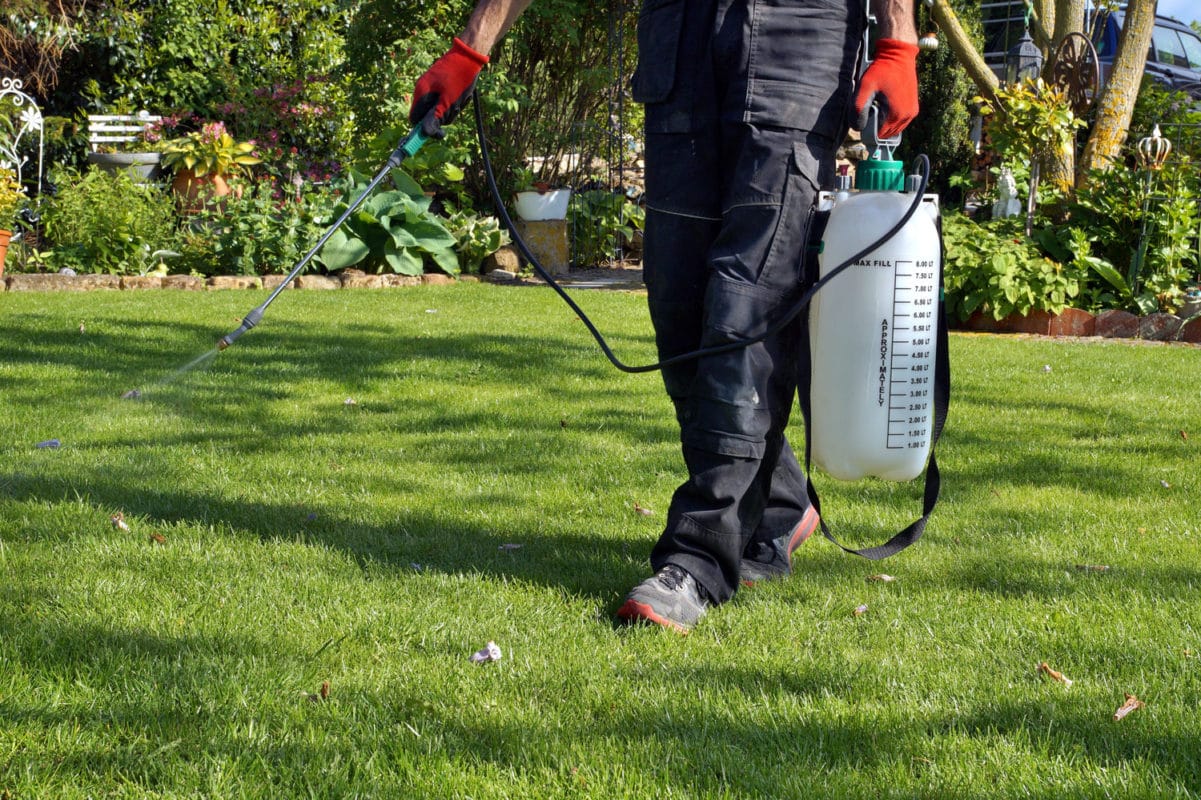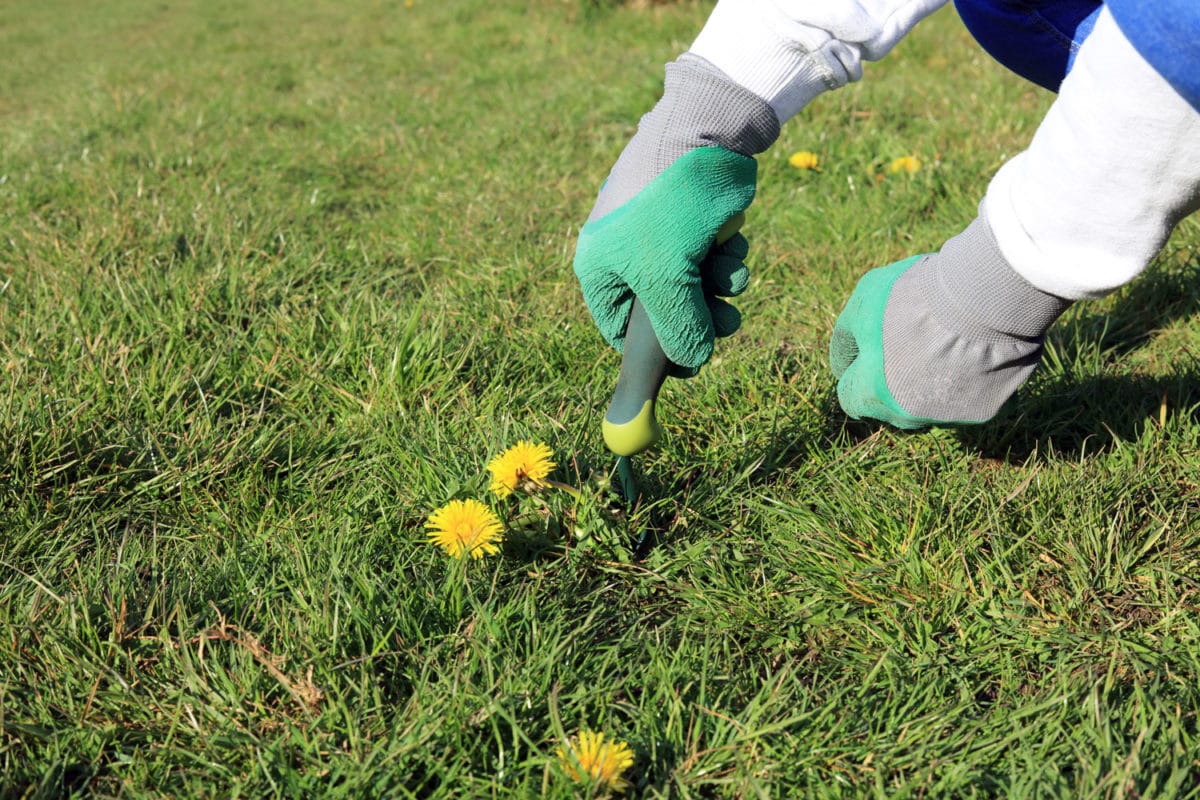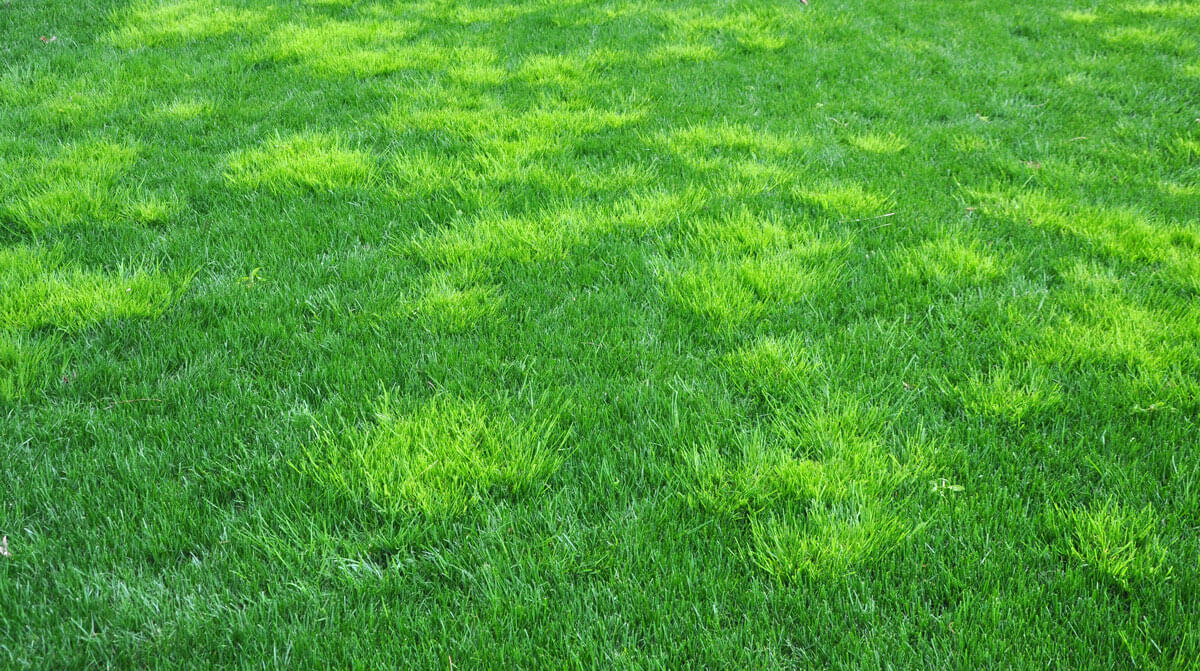Weeds. The lawn lover’s nemesis. Here is our beginners guide to getting rid of lawn weeds.
For most people, the objective of lawn care is to create a nice, evenly coloured and attractive sward of grass. Just grass, nothing else. In other words, we’re creating a monoculture. And if there’s one thing Mother Nature isn’t keen on, it’s a monoculture. Be prepared to battle with nature in this, our beginners guide to getting rid of lawn weeds and keeping them at bay.

Lawn weeds come in many shapes and forms. For some people they are a blessing in biodiversity, others may feel that weeds spoil the look of their lawn
If you are reading this blog, you’ve most likely decided to get rid of all the broadleaved weeds in your lawn so that you can achieve your aim of having a nice, even, uninterrupted sward of grass. So how will you achieve it?
Mechanical Vs Chemical Means Of Getting Rid Of Lawn Weeds
For centuries, man has relied on mechanical means to get rid of weeds. And actually, if you only have a few weeds, it’s cheaper and more satisfying to use mechanical means. In other words, pull them out of the ground. This way, you won’t risk contaminating the soil with man made chemicals.
However, if there are a lot of weeds in an area, pulling or digging them out one at a time feels like an impossibly slow task. And so, you may feel the turn to chemical means of getting rid of lawn weeds.
Broad Spectrum Weedkillers
There are many types of herbicide but they fall into two basic classes. Broad spectrum weedkillers and selective weedkillers.
If you are really fed up with your lawn, you could use a broad spectrum weedkiller – one that kills every plant that it touches. You will reduce your lawn to straw and then you can start again with new seed or new turf. If you choose this option, the chemical called glyphosate (often sold as Roundup) is a good spray to use. IT kills every part of the plant, leaves AND roots so that it can’t grow back again.
Some broad spectrum weedkillers simply dehydrate the leaves of the plant so that it appears to die, but in fact, the roots are still active and can regenerate themselves. They are quick acting, but not a good solution for killing off an ugly lawn.

Applying any type of spray to the lawn requires great care – follow the manufacturers instructions to the letter and keep yourself and others safe at all times.
Selective Weedkillers
If you want to preserve the grass in your lawn but get rid of weeds, you need a selective weedkiller.
The plants in this world can be divided into two types. There are Broadleafed plants, like dandelions, daisies, or chickweed. And then there are grasses – like the ones we want in our lawns. There are also weed grasses – but we’ll talk about them later.
Plant scientists call those two plant types ‘dicotyledons’ and ‘monocotyledons’. Broadleaved plants are dicotyledons and grasses are monocotyledons. The cotyledon is the embryo of a plant’s leaf that is found inside the seed.
The visible difference lies in their seeds. Split open the seed of a dicotyledon and you’ll find that it contains two leaf embryos. (In latin, ‘di’ means two). When the seed germinates, the seedling will initially have two leaves. Inside the seed of a monocotyledon, there is just one leaf embryo (mono means one). When these seeds germinate, only one leaf appears at first.
From day one, each of those two types of plant has a slightly different metabolism. I won’t go into details, but it means that you can potentially use herbicides that target either monocotyledon plants OR dicotyledon plants. In other words, they work on one type of plant but not the other. For example, if you’re cabbage patch was full of grass, you could use a spray to kill the grass but not the cabbages. Similarly, if your lawn were full of dandelions, you could find a chemical to get rid of the dandelions without damaging the grass. Clever isn’t it?
Lawn weed treatments use a selective herbicide to remove broadleaved weeds from grass.
Blanket Treatments or Spot Treatments?
Having decided that you will use a selective weedkiller for getting rid of lawn weeds, you now have two choices of how to apply it. You could either, treat the whole lawn in a blanket treatment. OR you could choose to spot treat the weeds.
Blanket treatments go across the whole lawn, even the areas without weeds. Spot treatments are applied just to the weeds themselves.

Removing unwanted plants by hand is by far the most environmentally friendly way of getting rid of weeds in your lawn. Too many to dig out? Try spot treating with a selective herbicide.
How do you decide between blanket treatmens and spot treating? Well, given the option, I choose spot treating any day. These chemicals are expensive to buy and they also have a cost to the environment. There’s no sense in applying them to areas of the lawn where they are not needed.
Having said that, if a lawn looks to have more than about 60% of weed cover, or, if the area to be treated is too big for spot treatment to be practical, then a blanket treatment it is.
Most lawn “weed and feed” treatments that you buy from the garden centre are blanket treatments. Follow the manufacturers instructions to the letter and your lawn will soon look better.
Alternatively, if you feel confident, you can mix up a liquid spray and apply it to your lawn. ALWAYS be sure to wear a protective spray suit, gloves and goggles and make sure that you know how to mix sprays correctly and apply them accurately with a sprayer.
These chemicals don’t know the difference between lawn weeds and ornamental plants. Any spray drift could damage your garden or worse – REALLY upset the neighbours! If you choose to use liquid spray, it’s always best to ask for professional help.
If you are spot treating, spray drift shouldn’t be a problem provided you don’t try to apply the chemical on a windy day. Simply mix up a small amount in a hand sprayer, following the manufacturers instructions to the letter, and give each weed a spritz of the diluted chemical.
Weed Grasses

Aaahhh the dreaded weed grass Poa annua, aka Annual Meadow Grass. It’s hard to avoid and even harder to get rid of.
Weed grasses are much more difficult to tackle as selective herbicides are not sophisticated enough to tell one species of grass from another. If you are new to lawn care, start by tackling the broadleaved weeds first and you can advance to weed grasses as you grow in confidence.
Too many weed grasses for your liking? Consider using a blanket treatment of broad spectrum herbicide to kill off the whole lawn and start afresh. Watch my video to discover how to do it.
What Happens When The Weeds Are Dead?
Once you have satisfactorily got rid of the weeds in your lawn, you will need to keep them at bay with some excellent lawn care techniques.
Scarify to remove any debris and open up the sward. Aerate the lawn to encourage the grass plants to grow stronger and out-compete any weeds. And then feed your lawn on a regular basis. Again, your aim is to make sure that the grass is stronger than any opportunist weeds.
Be vigilant – spot treat any new weeds as soon as you see them.
Your mowing regime will also help you keep weeds at bay. If fact, it’s the strongest weapon in your arsenal. Don’t mow too short until the sward has filled up any spaces left by the weeds you killed. Once you have a really dense sward, you can gradually reduce the cutting height if you want to. Remember the 1/3 rule and mow little and often, NEVER scalp your lawn because that gives weeds an ideal opportunity to move in.
Read our guide to identifying common lawn weeds

